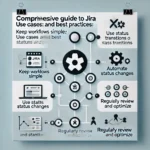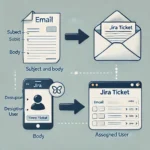Prompt chaining is a powerful technique in natural language processing (NLP) that involves stringing together multiple prompts or queries to achieve more complex and nuanced outputs from AI models. In this guide, we will explore the types of prompt chaining, its practical applications across various domains, and provide insights into its effectiveness and limitations.
What is Prompt Chaining?
Prompt chaining refers to the practice of sequentially feeding outputs from one query or prompt into subsequent queries, thereby guiding the AI model to refine its responses or generate more contextually relevant information. This approach leverages the ability of AI models, such as language models and neural networks, to build upon previous inputs and outputs to produce more sophisticated results.
Types of Prompt Chaining
Prompt chaining can be categorized into several types based on how queries are structured and sequenced:
- Sequential Chaining: This involves chaining together multiple prompts in a linear sequence, where each subsequent prompt builds upon the output of the previous one. It is often used to gather detailed information or to refine the context of a conversation.
- Conditional Chaining: In conditional chaining, the subsequent prompts are conditioned on specific criteria or outcomes from previous queries. This type of chaining allows for conditional logic and decision-making within the AI model’s responses.
- Contextual Chaining: Contextual chaining focuses on maintaining and utilizing context throughout the sequence of prompts. It ensures that the AI model retains information from previous interactions to generate coherent and contextually appropriate responses.
Uses and Applications of Prompt Chaining
Prompt chaining finds applications across various domains and industries, enhancing the capabilities of AI models in several ways:
1. Natural Language Understanding and Generation
- Chatbots and Virtual Assistants: Improving dialogue flow and maintaining context in conversational AI.
- Language Translation: Ensuring accuracy and context preservation across multiple translations.
2. Information Retrieval and Summarization
- Search Engines: Generating more relevant and detailed search results based on iterative queries.
- Content Generation: Producing comprehensive summaries or detailed reports based on iterative prompts.
3. Decision Support Systems
- Financial Analysis: Using sequential prompts to gather financial data and provide insights or predictions.
- Medical Diagnosis: Guiding AI models through a series of prompts to refine diagnostic recommendations based on patient data.
4. Creative Applications
- Art and Music Generation: Iteratively refining artistic or musical outputs based on user preferences or stylistic prompts.
- Storytelling and Narrative Generation: Creating complex narratives or interactive stories by chaining together prompts related to plot development and character interactions.
Effectiveness and Limitations
Prompt chaining offers several advantages, such as:
- Enhanced Contextual Understanding: Allows AI models to maintain context and continuity across multiple interactions.
- Improved Output Relevance: Produces more accurate and relevant responses by refining information through iterative prompts.
However, prompt chaining also has limitations:
- Complexity: Managing and coordinating multiple prompts can increase computational complexity and resource requirements.
- Dependency on Previous Outputs: Errors or biases in earlier prompts can propagate through subsequent interactions, affecting overall accuracy.
Why You Need to Chain Prompts in AI
Prompt chaining in AI is essential for enhancing the sophistication and contextuality of interactions with artificial intelligence models. By chaining prompts, AI systems can:
- Refine Responses: Sequential prompts allow for iterative refinement, improving the accuracy and relevance of AI-generated outputs.
- Maintain Context: Continuously linking prompts ensures that AI models retain and build upon previous information, leading to more coherent and context-aware responses.
- Enable Complex Interactions: It facilitates multi-step processes and decision-making within AI applications, enhancing their utility in various domains from customer service to medical diagnostics.
- Enhance User Experience: By delivering more accurate and contextually appropriate responses, prompt chaining improves user satisfaction and interaction quality with AI-driven services.
How to Use Prompt Chaining in AI
Prompt chaining is a powerful technique in artificial intelligence (AI) that allows for sequential querying to refine outputs and maintain context. Here’s how you can effectively use prompt chaining:
- Define Your Objective: Clearly outline the goal of using prompt chaining—whether it’s improving response accuracy, enhancing context preservation, or guiding complex decision-making.
- Sequence Your Prompts: Design a series of prompts that logically build upon each other. Start with an initial prompt that sets the context and iteratively refine subsequent prompts based on previous outputs.
- Maintain Context: Ensure each prompt in the sequence incorporates relevant context from previous interactions. This helps AI models retain information and produce more coherent responses.
- Iterate and Refine: Monitor the outputs at each stage of prompt chaining. Adjust prompts as needed to correct errors, improve accuracy, or adapt to changing user inputs.
- Utilize Conditional Logic (Optional): Introduce conditional statements or criteria in prompts to guide the flow of interactions based on specific outcomes or user responses.
- Evaluate Performance: Measure the effectiveness of prompt chaining by assessing response quality, user satisfaction, and alignment with your predefined objectives.
Best Practices for Prompt Chaining
- Clear and Concise Prompts: Write prompts that are clear, specific, and aligned with the desired outcomes.
- Monitor Output Continuously: Regularly review AI outputs to identify and address any inconsistencies or errors.
- Adapt to User Feedback: Incorporate user feedback to refine prompts and improve the overall interaction experience.
- Consider Computational Resources: Balance the complexity of prompt chaining with the computational resources available to ensure optimal performance.
FAQs about Prompt Chaining
1. How does prompt chaining differ from traditional query-based interactions?
- Prompt chaining involves sequential inputs where each subsequent prompt builds upon the output of the previous one, allowing for iterative refinement and context preservation.
2. Can prompt chaining be used with any AI model?
- Yes, prompt chaining can be applied to various AI models, including language models (e.g., GPT-3), neural networks, and even specialized models like those for image generation or recommendation systems.
3. What are some best practices for implementing prompt chaining?
- Ensure clear and concise prompts to maintain coherence.
- Monitor and validate outputs at each stage to detect and correct errors early.
- Consider the computational resources required for managing sequential interactions.
4. How does contextual chaining differ from conditional chaining?
- Contextual chaining focuses on maintaining and utilizing context across prompts, while conditional chaining introduces decision-making criteria or conditions based on previous outputs.
5. Are there tools or frameworks specifically designed for prompt chaining?
- Yes, some NLP frameworks and libraries support prompt chaining functionalities, offering APIs and modules to facilitate sequential interactions and context management.
External Link
Conclusion
Prompt chaining represents a sophisticated approach to leveraging AI capabilities, allowing for iterative refinement and context preservation in interactions with users or datasets. By understanding its types, applications, and considerations, organizations and developers can harness the full potential of prompt chaining to enhance AI-driven solutions across various domains.






